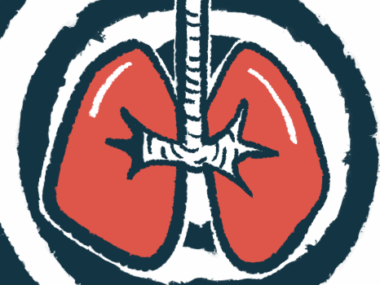New Method to Deliver Bacteria-killing Viruses Seen to Resolve Lung Infections in CF Mice
Written by |

A new therapy which is administered directly into the lung of viruses can kill bacteria, and was shown to be effective in reducing Pseudomonas aeruginosa infection and associated inflammation in a mouse model of cystic fibrosis (CF).
This new strategy may pave the way for future treatments of hospital-acquired lung infections and CF-associated infections, according to researchers at Georgia Institute of Technology.
The discovery was described in the study, “Inhaled bacteriophage-loaded polymeric microparticles ameliorate acute lung infections,” published in the journal Nature Biomedical Engineering.
Bacteriophages, which are viruses that specifically target and kill bacteria, have been viewed as an attractive alternative to antibiotics because they do not contribute to the development of antibiotic drug resistance.
Also, bacteriophages have been shown to be able to degrade drug-resistant bacterial biofilms — aggregates of bacteria that are protected from the action of antibiotics.
However, their use may represent a challenge. The harsh fabrication method, reduced stability, and fast loss of activity, as well as inefficient delivery systems, are just a few of the problems of the use of bacteriophages as a way to fight bacterial infections.
Led by researchers at Georgia Tech, a team has developed a new method that was shown to directly deliver bacteriophages into the lungs in an efficient way. The team created tiny, hollow, porous particles with a very specific size and volume, in order to ensure that they were small enough to enter the narrow spaces of the lungs but big enough to prevent their fast clearance.
These particles were then loaded with a mixture of three to five different phages known to target P. aeruginosa, a strategy that was expected to increase the anti-bacterial activity and “reduce the probability of development of resistance,” the researchers wrote.
The bacteriophages were not placed inside the particle, but rather on their surface to minimize loss of activity.
To test the effectiveness of these bacteriophage-loaded particles, the team administrated them via inhalation to mice with CF. They confirmed that by using a dry powder insufflator they could specifically deliver the loaded particles through the lungs, without triggering any adverse reactivity or unwanted immune response.
“The ability to deliver active phages using engineered biomaterials as dry powder formulations provides significant clinical benefits for lung infections, including longer drug stability, ease of administration with fewer side effects, and increased patient compliance,” the researchers wrote.
The phage-coated particles were shown to be more efficient at clearing bacteria in the lungs of mice than the commonly used dried phage particles formulation. Since the material used to build the particles is biodegradable, they were easily cleared from the mice’s bodies within a few days.
The particles were also found to be able to attack different strains of bacteria within biofilms.
“Phage delivery is an area where the right type of material could make a difference in therapeutic applications,” Andrés García, the Rae S. and Frank H. Neely chair and regents’ professor in Georgia Tech’s George W. Woodruff School of Mechanical Engineering, and senior author of the study, said in a news story from Georgia Tech written by John Toon.
“We set out to engineer a biomaterial carrier that would keep the phage active while delivering them deep into the lungs in a uniform fashion. This is a key step in moving this potential therapy forward,” García added.
Next, the team tested the particles in mice infected with P. aeruginosa and that lacked functional CFTR protein, which is the underlying cause of CF.
Animals treated with the bacteriophage-coated particles were found to have three times less bacteria in the lungs than untreated mice. Also, the viruses were shown to have the ability to replicate more efficiently when administrated in these new porous particles, which could sustain longer therapeutic anti-bacterial activity.
In addition, this delivery system was found to effectively support targeted treatment not only against P. aeruginosa but also against several other clinical strains of bacteria isolated from hospital-associated lung infections and cystic fibrosis patients.
Treatment with these phage-loaded particles was also shown to effectively prevent pneumonia-related deaths in mice.
“Phage therapy could complement existing therapies without worsening antibiotic resistance. The technique developed and tested through this important collaboration could address one of the major challenges we have with phage therapy, which is delivery,” said Nael McCarty, the study’s co-author and director of the Emory+Children’s Cystic Fibrosis Center of Excellence.
Additional studies are still needed to evaluate the effects and safety profile of repetitive and prolonged treatment regimens with these bacteriophage-coated particles.






